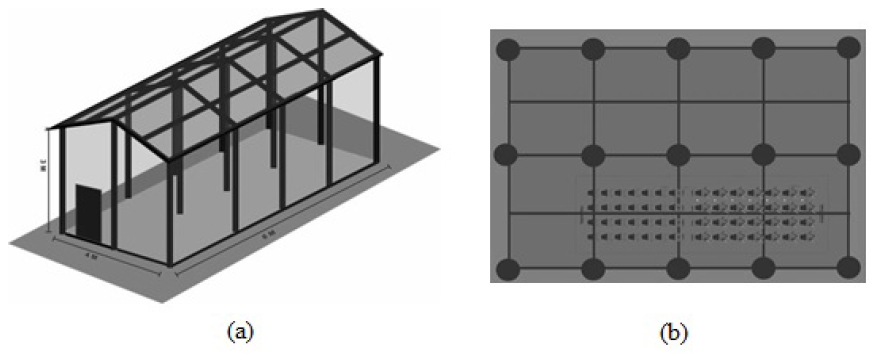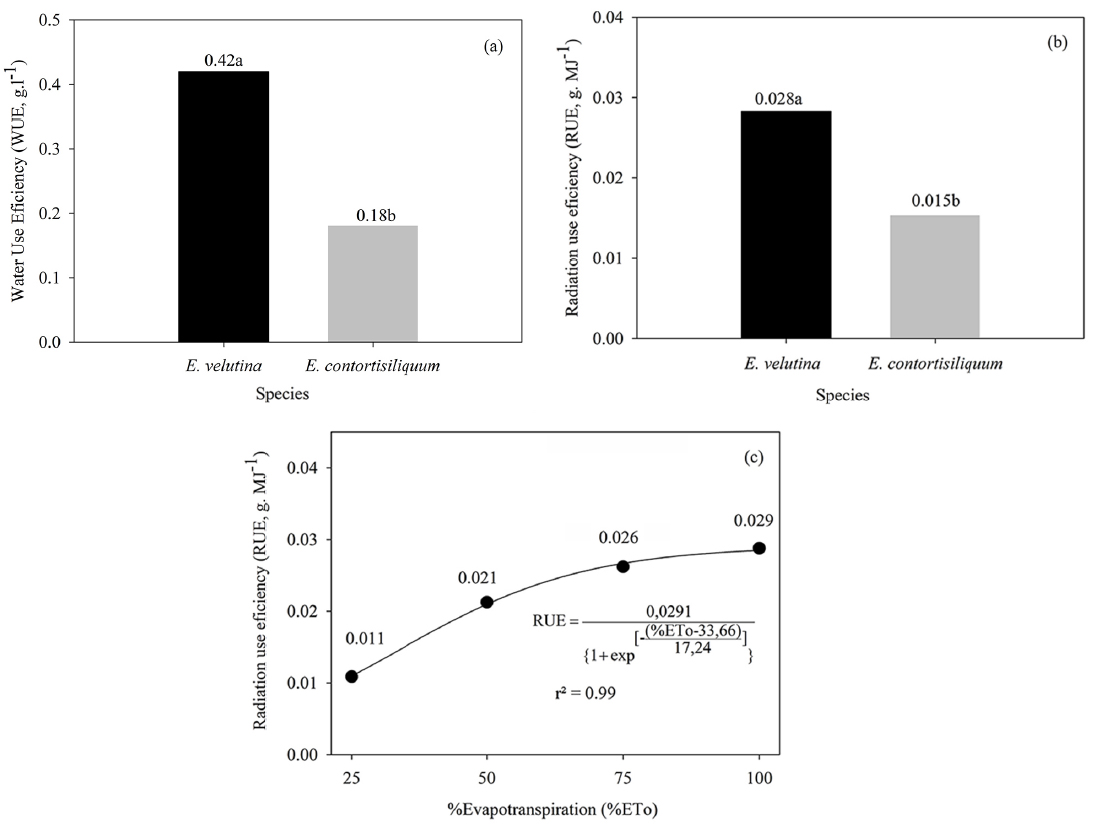Abstract
This study investigated the water and radiation use efficiencies by Erythrina velutina and Enterolobium contortisiliquum under four water regimes. The experiment was carried out in the municipality of Serra Talhada, PE, Brazil. The experimental design was completely randomized with a 2 x 4 factorial arrangement and three replications. The water regimes were imposed from water replenishments based on the reference evapotranspiration (25, 50, 75 and 100% ET0). Water and radiation use efficiencies were calculated to the 120 days of growth. E. velutina showed a greater accumulated dry biomass (4.89 g pl-1) than E. contortisiliquum (2.22 g pl-1). The 75% ET0 water regime can be adopted without damage to the growth of both species. E. velutina was more efficient in the conversion of water (0.42 g l-1) and radiation in dry biomass (0.028 g MJ-1), indicating high environmental resilience, which is important features to choose species more adequate for reforestation activities.
Keywords:
Caatinga; radiation use efficiency; water use efficiency





